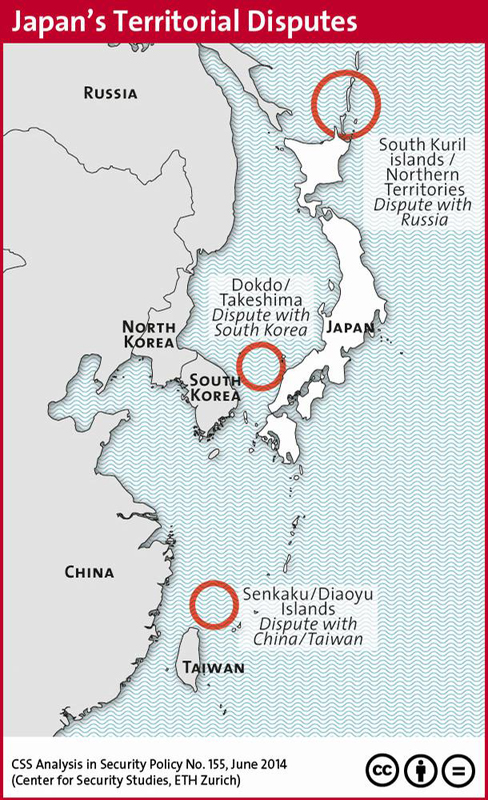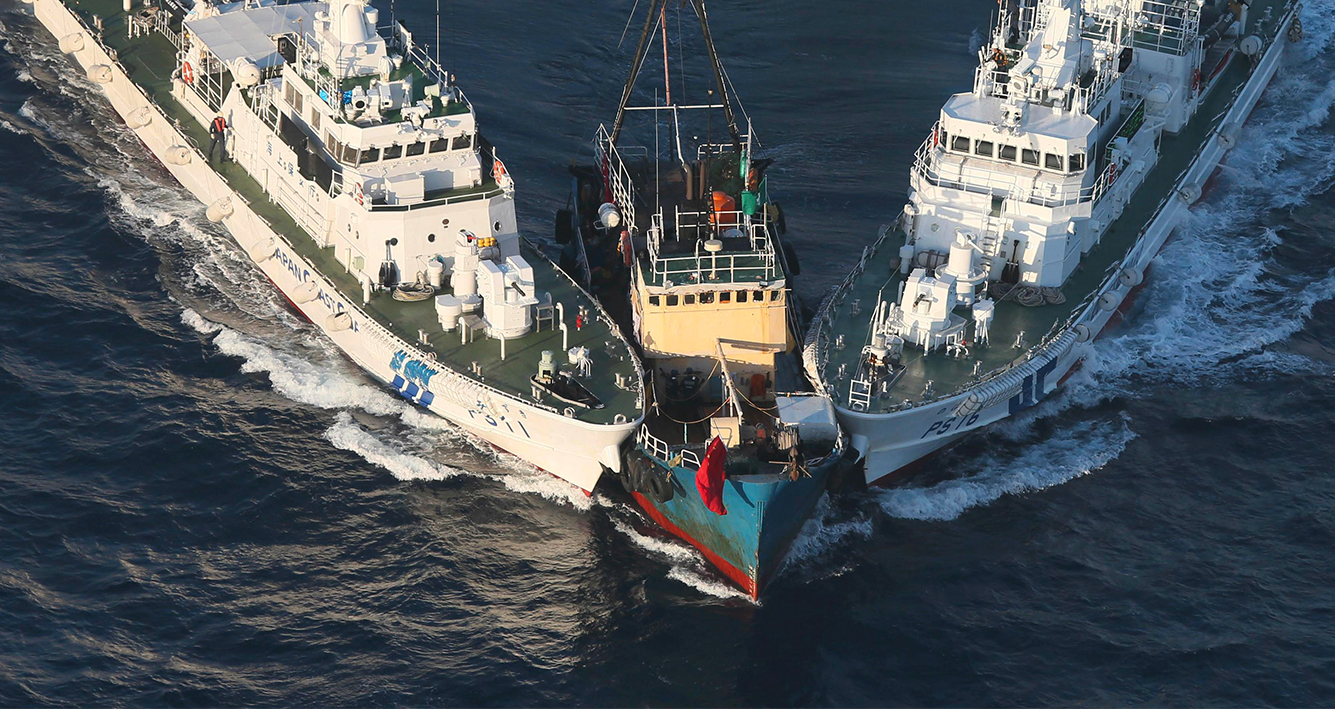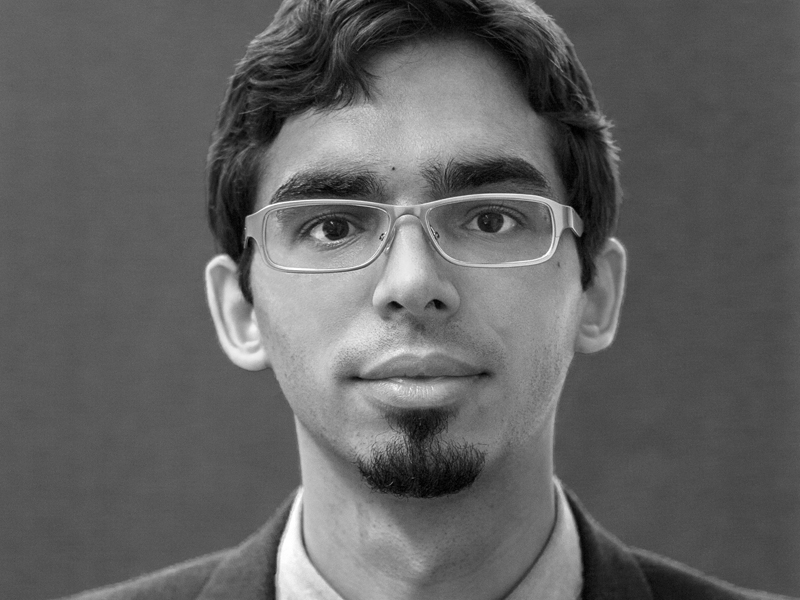Japan turns its back on pacifism
For the last four years, the Japanese government has resolutely resisted China’s increasingly aggressive foreign policy. At the same time, Prime Minister Abe’s cabinet has pushed for a change to Japan’s constitution to remove military constraints. ETH News spoke to political scientist Michael Haas about Japan’s departure from a pacifist security policy.
ETH News: Mr Haas, the conflict between China and Japan has intensified in recent months. At the Shangri-La Dialogue held in Singapore in late May, Japan’s Prime Minister Shinzo Abe attacked China with surprising verbal explicitness and reiterated his intention to defend the disputed Senkaku Islands, which are claimed by both Japan and China – if necessary, by force. Are we witnessing the beginning of a Cold War between Japan and China?
Michael Haas: Abe’s statements should certainly be taken seriously and the conflict over the islands in the East China Sea carries the potential for escalation. But the Cold War analogy, just as a First World War analogy, falls short: there are no entrenched alliance blocks and no arms race so far.
Even though China has quadrupled its military budget over the past 15 years?
What we are witnessing at present is a modernisation and expansion of China and Japan’s armed forces – particularly in the maritime sector with the expansion of submarine fleets. But we have not yet seen the strong cyclical element of a typical arms race, with the pattern of action and reaction.
How would you assess the current balance of military power between China and Japan?
Compared with China, Japan’s armed forces – the Japan Self-Defense Forces – are very well trained. Furthermore, Japan has a technological and operational advantage through its close cooperation with the US. However, China’s armed forces are clearly superior in terms of numbers. China has increased its military spending over the past 25 years by an average of 10% to 12% per year. In the long term, the Chinese army is sure to outperform the Japan Self-Defense Forces. This is not only a concern for Japan but also for other east and south-east Asian countries, such as Singapore, Australia and South Korea.
And now by a cabinet decision, Abe has pushed through the reinterpretation of Article 9 of the constitution, which committed Japan to pacifism. Why this realignment?
The dispute with China since 2010 over the islands in the East China Sea is certainly an important factor. At the same time, China’s military expansion and assertive foreign policy has led to an uprising of nationalist conservatives in Japan, who want to break away from the military self-restraint that was imposed on Japan after the Second World War as recognition of guilt. A group of neo-conservatives around Abe aims to lead Japan back to being a great power capable of military action. Abe deliberately used the Senkaku Islands dispute to drive forward this vision politically.
The decision goes against the will of the people – the reinterpretation of Article 9 has led to demonstrations across the entire country.
For a constitutional amendment, Abe needed a two-thirds majority in parliament and a national referendum. But as it became apparent that this would not happen, his cabinet decided on a reinterpretation of the existing article instead. According to recent surveys, only 34% of the electorate support this solution. Many now fear a revitalisation of Japanese militarism and a departure from its pacifist tradition.

What exactly is behind the reinterpretation of Article 9, which committed Japan to pacifism after the Second World War?
It is about the right of collective self-defence. According to the UN Charter, each sovereign state has the right to defend itself and participate in the defence of its allies. The previous interpretation of Article 9, however, denied Japan the opportunity to support an ally using military force. The reinterpretation of the article will allow Japan to participate in the defence of an ally – for example, the US – or even take part in a multilateral operation authorised by the UN Security Council. In other words, Japan’s forces could be called into action even if the country is not attacked directly.
Part of the new doctrine also covers the lifting of the ban on arms exports, which has also been criticised by the Japanese people.
The amendment has paved the way for a series of new defence technology ties with not only the US but also with France, the UK and Australia. For example, Japan plans to develop a new submarine with Australia.
It is also in negotiations with India to build a new strategic partnership. Why?
The main interest lies in India’s strategic location – Japan receives most of its crude oil supplies through the Indian Ocean and the South China Sea. If China tried to stop Japan’s supply of oil, India could exert pressure on China.
That sounds as though Japan is forging an anti-Chinese coalition?
Of course, China is afraid of being encircled by a US-led alliance – especially as the US and India have strengthened their relationship in recent years. But it’s still a long way away from an anti-Chinese alliance. Japan’s potential allies have different interests and pursue their own agendas in the Pacific region.
Historically, the US is Japan’s most important ally and operate several military bases in the country. How was the realignment of Japan’s security policy received in Washington?
The US supports Abe’s policies. It appreciates his efforts to expand the capabilities of Japan’s military forces, strengthen Japan’s military involvement in east Asia and stand up to China’s increasingly confrontational stance. Now the Defense Guidelines, which govern military cooperation between the US and Japan, are to be revised by the end of the year and could anchor Japan’s new military freedom in the long term. But some in Washington fear that the US may be dragged unintentionally into a territorial conflict with China by an overly assertive Japanese government.
Michael Haas is a researcher on the Global Security team at the Center for Security Studies (CSS), ETH Zurich. His analysis of Japan’s Military Rebirth appeared in June.


